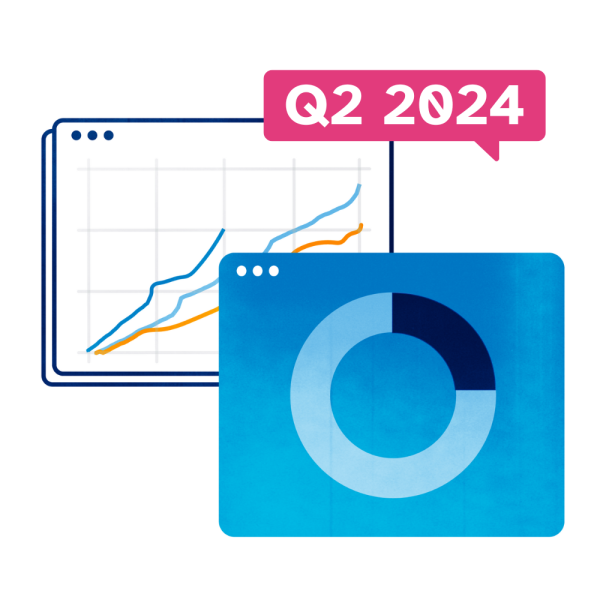At the end of January, reporters will be writing about the impact of small-dollar donors because a bunch of interesting fundraising data found in FEC filings will become public. These numbers may seem technical, but they show the people power behind candidates and organizations!
Campaign finance law requires federal campaigns and organizations to periodically report their fundraising numbers to the Federal Election Commission (FEC). It also requires ActBlue to report all federal donations folks make to groups on our fundraising platform. As an organization focused on democratizing the least democratic part of politics — raising money — we are excited about these numbers because they help show the power of small-dollar donors taking action! And we’re not the only ones: The press is interested, too. This is why FEC filings are important to millions of grassroots donors like you.
Let’s break down how it all works!
SOME (IMPORTANT) JARGON
Your favorite federal candidates and organizations have to report their fundraising information to the FEC, with most submitting their fundraising reports every quarter! But in 2020, as presidential campaigns ramp up, so do the filings. While congressional campaigns will continue to file their reports every quarter and provide additional election year reports, presidential campaigns will begin to file more frequently.
Then these fundraising numbers become public on the FEC’s website! The filings detail the total dollars raised and how groups raised it, as well as the total dollars they spent and how they spent it. This is where donors like you come in — these numbers show important signs of grassroots strength!
One of the most important things to look for in these filings are itemized and unitemized contributions:
-
When donors give more than $200 in total to a campaign or organization, that group is legally required to list their donations separately and share each donor’s name, address, occupation, and employer information for transparency! This is known as “itemizing.”
-
Groups do not have to share information about donors who give $200 or less, meaning these donations are “unitemized.”
Here at ActBlue, we’re required by law to itemize every donation made through our platform for federal candidates and organizations, no matter how much someone has given. This means you can confirm that your donation went to your intended candidate or cause!
YOUR IMPACT IN THE NUMBERS
More than ever, people are paying attention to and reporting on the fundraising numbers made available through filings, and campaigns and organizations are proud to share their grassroots fundraising numbers with supporters! This enthusiasm is for good reason, too. Through public data provided by the FEC, you can see the immense growth in unitemized donations given to Democrats running for federal office over the past few election cycles (which are two years long). While all of the filings for the 2020 election cycle aren’t available yet, this grassroots momentum has skyrocketed — check out the incredible small-dollar support that fueled House and Senate candidates in the 2018 elections:

You can see the impact of small-dollar donors on a campaign or organization in their filing by looking at these two numbers:
-
Total individual contributions: How much money individual people gave to the candidate or cause.
-
Percent unitemized individual contributions: This percent measures how much of a candidate or group’s donations came from unitemized contributions. It can give you an idea of the grassroots momentum powering these candidates and causes! You can calculate this yourself from a candidate or organization’s FEC summary page. Divide “Unitemized individual contributions” by “Total individual contributions,” and then multiply by 100.
SMALL-DOLLAR DONORS, LEADING THE WAY
Sometimes campaigns and organizations are so excited about their fundraising numbers that they’ll share statistics with supporters before their FEC filing is public! We even do this at ActBlue because we love sharing the big milestones and achievements of small-dollar donors directly with you! Our filings will be made public later this month, but we already shared how grassroots donors made December 31, 2019 the biggest day ever in ActBlue history by dollars raised and number of contributions — that’s amazing news for all of the candidates and causes on the left that use our platform.
Here are some of the small-dollar statistics that we like to share, and how they show your direct impact on democratizing power. Reporters and analysts also track these, and candidates and organizations often release these numbers on their own to share with their supporters, too!
-
Number of contributions: How many donations people made. This is different from the number of donors — one donor can make multiple contributions!
-
Average contribution size: This is total dollars raised divided by the number of contributions. Many groups are excited to share this statistic, because it shows how much they’re powered by small-dollar donors (rather than fewer donors giving larger amounts).
-
Unique donors: Also known as the number of individuals who gave, this stat shows how many people are taking action and giving to their favorite group! This number is a great indicator for the people power behind a candidate or organization.
Small-dollar donors already made history in 2019, from helping to flip seats in Kentucky and Virginia to raising more than $1 billion for Democrats, progressive organizations, and nonprofits through ActBlue. And with Democrats organizing hard to win the White House and state legislatures that will determine our voting maps for the next 10 years, we’re excited to see the people power shown in FEC filings this year!



